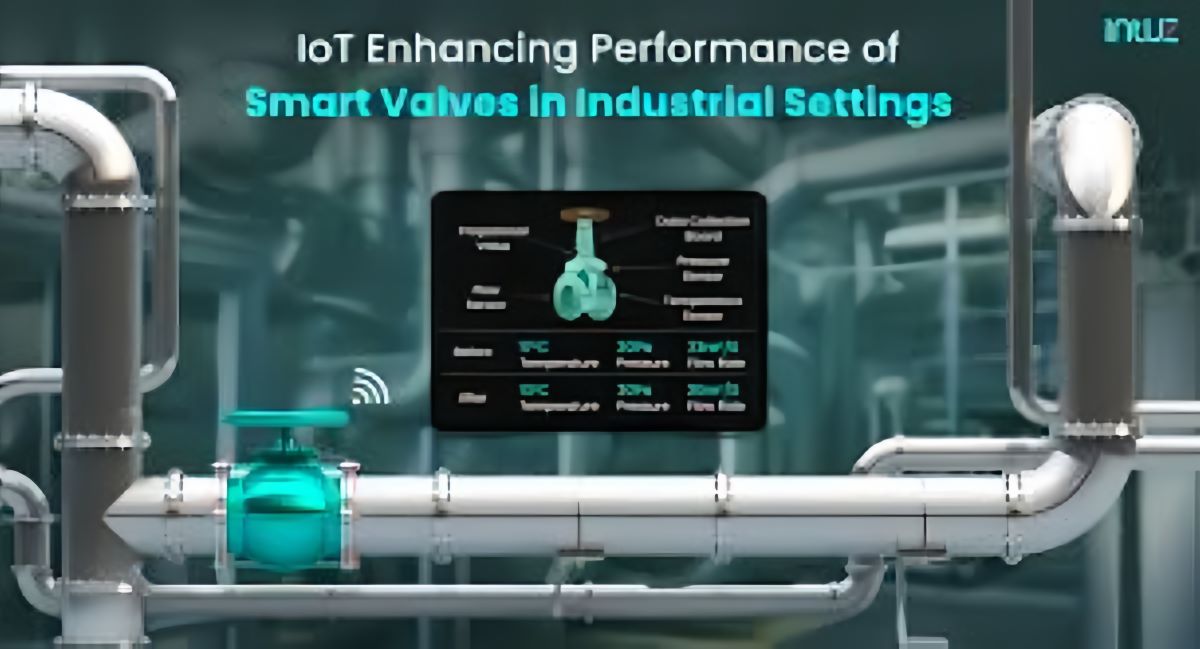1. Domestic Background
1.1 Growing Market Demand in China
In recent years, China’s valve industry has entered a stage of rapid development. Driven by the expansion of industrial infrastructure, the demand for valves in sectors such as oil and gas, petrochemicals, water treatment, and power generation continues to increase. As industrial projects become larger and more complex, customers are seeking high-performance, durable, and intelligent valve products that can operate reliably in demanding environments.
However, despite this strong momentum, many domestic manufacturers still face challenges in terms of product quality, technological innovation, and standardization. While traditional manual and semi-automatic valves once dominated the market, they no longer meet the growing requirements for precision, efficiency, and data integration in modern industrial systems.
This shift in customer expectations is pushing Chinese valve enterprises to upgrade their manufacturing processes and product lines. Digital transformation has thus become an inevitable step forward—allowing manufacturers to improve production accuracy, reduce operational costs, and deliver smarter, more efficient valve solutions.
1.2 Government Support and Policy Encouragement
The Chinese government has identified digital transformation as a key driver for modernizing the country’s manufacturing base. Policies such as “Made in China 2025” and the “Intelligent Manufacturing Development Plan (2016–2020)” have created a favorable environment for companies transitioning from traditional production to intelligent manufacturing.
These policies encourage enterprises to adopt digital tools—such as automation systems, IoT platforms, and data analytics—to improve efficiency and ensure product traceability and quality control. For the valve industry, this means moving from isolated manual operations to integrated, data-driven management systems that connect design, production, testing, and after-sales service into one digital ecosystem.
In addition, government-led initiatives have promoted the establishment of industry standards that support digital adoption. Unified guidelines for smart manufacturing not only ensure compatibility between systems and suppliers but also reduce the uncertainty and risks faced by small and medium-sized enterprises during transformation. With policy support and technological advancement, China’s valve industry is gradually stepping into a new era of digital intelligence.
2. International Background
2.1 Digital Transformation in Developed Economies
Compared to emerging markets, Europe and the United States started their digital transformation journey much earlier. Many established valve manufacturers in these regions have already adopted technologies such as the Internet of Things (IoT), digital twin simulation, and cloud computing to optimize their production systems.
By connecting equipment and processes through smart networks, these companies have achieved real-time data monitoring, predictive maintenance, and automated production scheduling. For example, through digital twins, manufacturers can simulate valve performance under different working conditions, allowing for early fault detection and performance optimization before physical production even begins.
This high level of digital integration has greatly improved production efficiency, reduced downtime, and strengthened quality control. More importantly, it allows companies to respond faster to customer needs, providing customized solutions while maintaining consistency and reliability. As a result, Western valve brands have maintained a strong position in the global market, setting the benchmark for technological innovation and operational excellence.
2.2 Rising Global Demand for Digitalization
Globally, Industry 4.0 has become the core trend shaping modern manufacturing. As industries such as energy, chemicals, and water treatment evolve toward smart and automated systems, the demand for digitalized, high-performance valves continues to grow.
End users now expect valves that can do more than simply open or close—they must communicate data, self-diagnose, and integrate seamlessly with intelligent control systems. This shift has redefined what it means to be a “valve manufacturer.” Companies are no longer just producing mechanical components; they are delivering complete smart flow control solutions.
In the international market, digital transformation has therefore become a necessity rather than an option. For global competitiveness, valve companies must enhance their technical capabilities, adopt standardized digital platforms, and offer products that align with the needs of smart plants and automated systems worldwide.
As a global valve supplier, our company recognizes that staying ahead in this rapidly changing landscape requires continuous investment in digital technologies—from intelligent production lines to smart control systems that provide our clients with reliable, data-driven valve performance.
3. The Purpose and Significance of Digital Transformation
The digital transformation of the valve industry is not just about technological upgrades; it represents a comprehensive change in how companies design, manufacture, manage, and service their products. Below are six key objectives that define the importance of this transformation.
3.1 Standardizing the Digital Transformation Process
A major challenge faced by valve manufacturers is the lack of unified standards and clear implementation frameworks for digitalization. Without consistent guidelines, different enterprises adopt varied technologies and management systems, leading to inefficiencies and integration difficulties.
Establishing standardized processes for digital transformation ensures that every step—from product design and data collection to quality control and after-sales tracking—follows a coherent, traceable structure. Standardization also simplifies the process for smaller enterprises that may lack digital expertise, allowing them to adopt best practices without the need for extensive trial and error.
By creating an industry-wide roadmap for digital adoption, companies can transition smoothly from traditional manufacturing to intelligent production, minimizing risks and maximizing long-term benefits.
3.2 Improving Production Quality and Efficiency
At its core, digital transformation aims to make manufacturing smarter, faster, and more precise. By applying intelligent manufacturing technologies such as automated assembly, robotic machining, and real-time monitoring systems, companies can significantly reduce production errors and resource waste.
For example, the integration of sensors and IoT devices enables factories to collect and analyze production data in real time. Managers can detect abnormalities immediately, adjust workflows, and ensure that every valve produced meets strict performance standards. Predictive maintenance further reduces downtime by identifying potential failures before they occur.
In our own operations, the adoption of digital management systems has optimized our workflow—from raw material tracking to finished product inspection—allowing us to provide customers with more consistent quality, faster delivery times, and enhanced product reliability.
3.3 Promoting Technological Innovation and Industrial Upgrading
Digital transformation also acts as a catalyst for technological innovation. By incorporating cutting-edge tools such as cloud computing, big data analytics, and artificial intelligence, valve manufacturers can transform how they design and test new products.
Data-driven insights help engineers optimize flow performance, pressure control, and energy efficiency. For example, virtual simulation environments allow product developers to run thousands of tests without the cost of physical prototypes, accelerating innovation and reducing time-to-market.
In addition, digital platforms make it easier to integrate R&D with production and customer feedback. This closed-loop innovation model ensures that new valve products are continuously improved based on real-world data and user experiences. As a result, the entire industry moves toward higher technological sophistication and smarter solutions.
3.4 Driving Industry-Wide Upgrading
Beyond individual companies, the digital transformation of the valve industry contributes to the overall modernization of the entire sector. Standardized digital practices align manufacturing, management, and product quality across enterprises, pushing the industry toward higher benchmarks of performance and sustainability.
When leading companies adopt smart manufacturing, they set new norms for efficiency, safety, and environmental responsibility. This in turn encourages upstream suppliers and downstream partners to modernize as well, creating a ripple effect throughout the value chain.
As one of the industry players committed to digital innovation, our company actively collaborates with technology partners and industrial organizations to promote the adoption of digital standards, helping elevate the global competitiveness of the valve manufacturing sector.
3.5 Reducing Transformation Costs and Risks
While digital transformation requires upfront investment, standardized approaches and shared platforms can significantly lower costs and risks. With clear guidelines and accessible technologies, even small and medium-sized enterprises can participate in the digital upgrade process without excessive financial burden.
By leveraging open-source systems, modular automation tools, and cloud-based platforms, companies can scale their digital initiatives gradually and efficiently. These tools reduce the need for costly trial phases and help prevent the operational disruptions often associated with large-scale transformation.
Ultimately, a well-structured digital roadmap allows enterprises to achieve long-term savings by minimizing manual labor, reducing downtime, and improving energy efficiency.
3.6 Enhancing Supply Chain Collaboration
One of the most powerful outcomes of digital transformation is the creation of a more transparent, connected, and resilient supply chain. Through standardized digital interfaces, upstream suppliers, manufacturers, and distributors can share real-time data on production status, logistics, and demand forecasting.
This integration improves communication and reduces bottlenecks across the entire value chain. In times of disruption—such as material shortages or logistics delays—digital platforms enable quick coordination and adaptive responses.
Moreover, the enhanced traceability of digital supply chains boosts trust and accountability among partners, ensuring consistent product quality and faster customer service. In an increasingly globalized and complex industrial landscape, this collaborative advantage is essential for long-term success.
4. Conclusion: The Future of Smart Valve Manufacturing
The transition from manual to intelligent valve control is not merely a technological evolution—it is a strategic shift that defines the competitiveness of modern manufacturing enterprises. For valve manufacturers, embracing digital transformation means embracing the future of industrial innovation, where data, automation, and intelligence drive every process.
As a global valve exporter committed to excellence, we continuously invest in smart production systems, intelligent testing equipment, and digital management platforms. Our goal is to provide customers worldwide with advanced, reliable, and efficient valve solutions that meet the standards of Industry 4.0.
Digital transformation is no longer an option—it is the foundation for the next generation of growth, sustainability, and global leadership in the valve industry
Post time: Oct-11-2025



